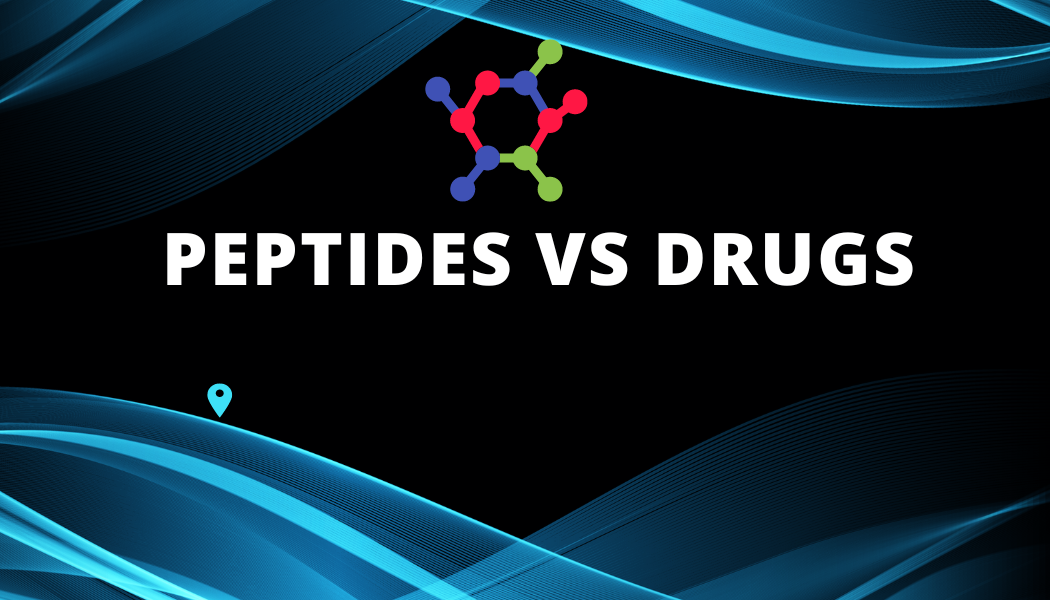Peptides vs. Traditional Drugs: The Ultimate Face-off

Hey Peptide Enthusiasts,
Sean Davis here, bringing you the latest and greatest in the world of peptides with another edition of The Peptide Insider. Today, we're diving into a topic that's as fascinating as it is crucial—peptides versus traditional drugs. Buckle up, because we’re about to get into the nitty-gritty of why peptides are the future of medicine.
Peptides: The Biochemical Powerhouses
First off, let’s talk about our stars of the show—peptides. Think of peptides as the high-performance sports cars of the biochemical world. These bad boys are short chains of amino acids, the building blocks of life itself. Typically, they’re composed of 2 to 50 amino acids, making them precise and powerful. They’re like the elite special forces, executing their missions with pinpoint accuracy (BioMed Central).
Small-Molecule Drugs: The Reliable Workhorses
On the other hand, we have traditional small-molecule drugs. These are the old reliable pickup trucks of medicine—small, sturdy, and able to get the job done. These chemically synthesized molecules are easy to produce and can be taken orally, making them incredibly convenient (BioMed Central).
Key Differences: Size Matters, But So Does Precision
Here’s where it gets interesting. Peptides and traditional drugs differ in size and complexity. Peptides, being larger and more complex, can mimic natural biological processes more closely. They interact with cell receptors to trigger specific responses, like insulin release for controlling blood sugar (BioMed Central).
Traditional drugs, due to their small size, can easily cross cell membranes and reach intracellular targets. They’re the go-to for many conditions because they’re stable and easy to manufacture, but they often lack the specificity of peptides.
Administration: The Route Less Traveled
Peptides usually need to be injected because our digestive enzymes love to break them down if taken orally. But don’t worry, advances in pharmaceutical technology are paving the way for oral peptide formulations. Imagine popping a peptide pill—now that’s convenience! Traditional drugs, however, have long had the upper hand here, with most being easily taken by mouth (BioMed Central).
The Future: Blurring the Lines
Here’s the kicker: the lines between peptides and traditional drugs are blurring. Biopharmaceuticals are combining the best of both worlds, creating treatments that are as effective as peptides and as convenient as traditional drugs. Think of it as the hybrid revolution in medicine.
Safety and Efficacy: The Peptide Edge
In terms of safety, peptides generally have a lower risk of off-target effects due to their specificity. They’re like a sniper, hitting only the intended target, while traditional drugs can be more like a shotgun, sometimes hitting unintended targets.
Why Peptides Are the Future
Peptides are changing the game, folks. From GLP-1 agonists revolutionizing diabetes and obesity treatment to potential breakthroughs in neurological health, peptides are the future of precision medicine. They offer targeted action with fewer side effects, paving the way for smarter, more effective treatments.
Wrapping Up
So, next time you hear someone raving about traditional drugs, give them a nod and then introduce them to the power of peptides. We’re on the cusp of a revolution in medicine, and you, my friend, are at the forefront with The Peptide Insider.
Until next time, keep those receptors primed and your peptides potent!
Stay Peptide-Powered,
Sean Davis